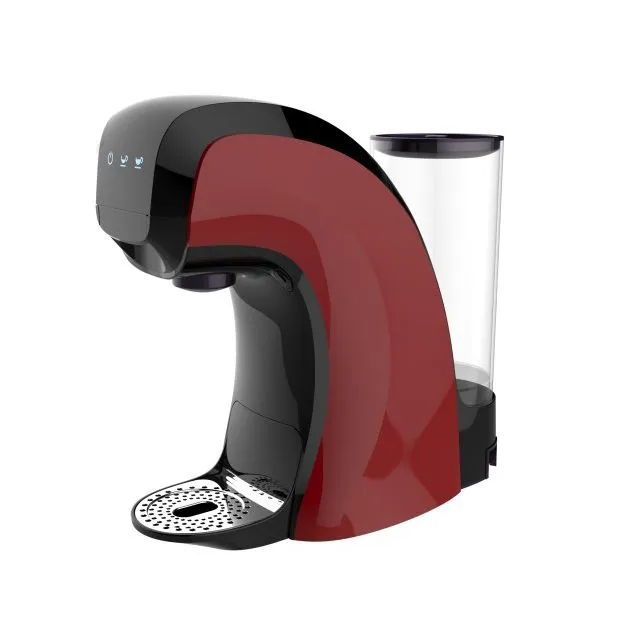Espresso Machines for Home Baristas: Crafting the Perfect Coffee at Home
2024-09-10
For many coffee enthusiasts, there’s nothing quite like the rich, bold flavor of a freshly brewed espresso. While café-quality espresso may seem like a luxury reserved for your favorite coffee shop, espresso machines for home baristas are making it easier than ever to create that same experience in the comfort of your own kitchen.
Whether you’re a seasoned coffee connoisseur or just starting your journey into the world of espresso, investing in the right espresso machine can elevate your home brewing game to the next level.
Why Choose an Espresso Machine for Home Use?
1. Control Over Your Coffee
One of the most appealing aspects of owning an espresso machine is the level of control you have over every step of the brewing process. From the grind size to the water temperature, pressure, and extraction time, you can fine-tune each variable to create a shot of espresso that suits your exact taste preferences.
2. Cost Savings
While the initial investment in an espresso machine might seem steep, it can quickly pay off for avid coffee drinkers. Instead of spending money on daily café visits, you can make barista-quality drinks at home for a fraction of the cost. Over time, the savings can be substantial.
3. Convenience and Customization
Having an espresso machine at home means you can enjoy your favorite coffee drinks whenever you want, without leaving the house. Plus, you can experiment with different beans, milk options, and flavors to create a truly personalized coffee experience.
Types of Home Espresso Machines
There are several types of espresso machines available, each offering a different level of convenience, control, and skill required.
1. Manual Espresso Machines
Manual or lever machines offer the highest level of control, allowing the user to manually pump water through the coffee grounds to extract the espresso shot. These machines require more skill and practice, but they’re perfect for purists who want to master the art of espresso making.
- Pros: Complete control over extraction, great for experienced baristas.
- Cons: Steeper learning curve, requires more time and effort.
2. Semi-Automatic Espresso Machines
Semi-automatic machines are the most popular choice for home baristas. They allow you to control the grind, tamp, and shot timing but automate the water pressure, making them a good balance between control and convenience.
- Pros: Easy to use for beginners, still offers customization options.
- Cons: Requires some hands-on involvement, more expensive than manual machines.
3. Fully Automatic Espresso Machines
Fully automatic machines take most of the work out of your hands. They automate everything from grinding the beans to brewing the espresso, often with the push of a button. These machines are ideal for those who want a quick, hassle-free way to enjoy espresso at home.
- Pros: Extremely easy to use, fast, consistent results.
- Cons: Less control over the brewing process, higher price point.
4. Super-Automatic Espresso Machines
Super-automatic machines take automation a step further by including built-in grinders and milk frothers. With just one touch, you can go from whole beans to a perfectly brewed espresso or cappuccino in minutes.
- Pros: Convenience at its finest, minimal effort required.
- Cons: Expensive, limited ability to fine-tune the process.
Key Features to Consider
When choosing an espresso machine for home use, several features can impact your brewing experience:
1. Grinder
Freshly ground coffee is essential for a great espresso, so machines with built-in grinders are a convenient option. If your machine doesn’t have one, investing in a high-quality burr grinder is a must.
2. Steam Wand or Milk Frother
If you enjoy milk-based drinks like lattes or cappuccinos, a machine with a steam wand or built-in milk frother is essential. A steam wand allows you to froth milk manually, while automatic frothers take care of the work for you.
3. Water Pressure
A good espresso machine should have at least 9 bars of pressure for proper extraction. This ensures that the water flows through the coffee grounds at the right speed to produce a balanced shot.
4. Boiler Type
Machines with dual boilers or heat exchange systems allow you to brew espresso and steam milk simultaneously, saving time and ensuring consistency in temperature.
5. Size and Design
Consider the size of the machine and how it will fit into your kitchen. Some machines are compact and sleek, perfect for small spaces, while others are larger and more industrial, offering a more professional setup.
Tips for Making the Perfect Espresso at Home
1. Start with Fresh, High-Quality Beans
The quality of your coffee beans has a huge impact on the final flavor of your espresso. Look for freshly roasted beans and grind them right before brewing to preserve their flavor and aroma.
2. Master the Grind
The grind size for espresso should be fine, like table salt. Experiment with different settings on your grinder to find the perfect balance between a fast and slow extraction.
3. Tamp Consistently
Tamping the coffee grounds evenly is key to ensuring a smooth and balanced extraction. Apply firm, consistent pressure when tamping to create an even bed of coffee in the portafilter.
4. Monitor the Extraction Time
A good espresso shot should take around 25 to 30 seconds to extract. If the shot pulls too quickly or slowly, adjust your grind size or tamping technique.
5. Practice Makes Perfect
Like any craft, making espresso takes practice. Don’t be discouraged if your first few attempts aren’t perfect. With time, you’ll learn how to adjust your technique and machine settings to suit your taste.
Conclusion
Investing in an espresso machine for home baristas allows you to enjoy café-quality coffee whenever you want. Whether you prefer the hands-on approach of a semi-automatic machine or the ease of a super-automatic, there’s a machine out there to suit your needs and preferences. With the right equipment, fresh beans, and a little practice, you’ll be pulling perfect espresso shots at home in no time, transforming your kitchen into your personal coffee haven.



